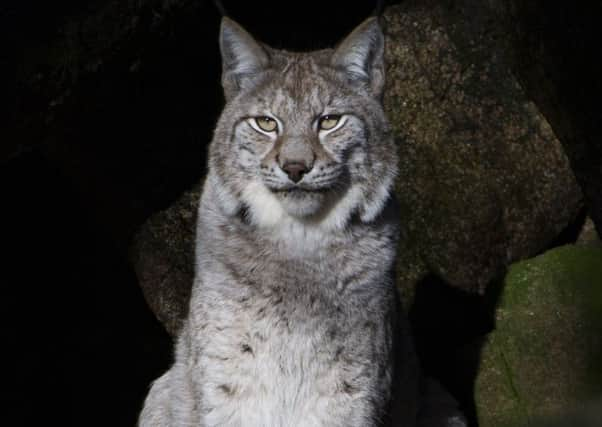Scottish Borders Council yet to be consulted about bid to bring lynx back


Conservation charity the Lynx UK Trust submitted an application to Natural England in July for a licence to carry out a trial introduction of the medium-sized wildcats in England’s largest man-made woodland.
That bid is still under consideration by the advisory quango, but if permission is granted, six Eurasian lynx – four females and two males – would be released for a five-year period.
Advertisement
Hide AdAdvertisement
Hide AdThe trust claims the species’ extinction in the UK has contributed to overpopulation of its favourite prey – roe deer – and that reintroduction could yield a major boost for tourism in and around the forest.


“The charismatic cats can be major drivers for rural economies, with the potential to bring tens of millions of pounds of tourism money into the Kielder region,” stated a recent trust press release also claiming there had been “widespread consultation” with local communites and businesses ahead of the licence application.
At the latest full council meeting, Tweeddale East councillor Stuart Bell wanted to know if the authority has been consulted about the move.
“I ask because Kielder is directly adjacent to the Borders,” said Mr Bell.
Advertisement
Hide AdAdvertisement
Hide Ad“These animals can roam over a significant territory, and there are mixed messages about the impact their release would have on livestock farmers and on the general public out in our countryside.”


Leaderdale and Melrose councillor Tom Myers, the authority’s executive member for planning and environment, told him he understood that a public meeting organised by the trust had taken place in Newcastleton in November last year.
“It will be for Natural England to determine what steps it takes in considering the licence application, and it is understood it will consult with Scottish Natural Heritage,” said Mr Miers.
“Scottish Borders Council has neither been informed nor consulted on this proposal by any party. Our officers have, however, contacted Scottish natural Heritage to establish how the council and our local communities might contribute to this process.
Advertisement
Hide AdAdvertisement
Hide Ad“The Lynx UK Trust indicates that no attacks on humans have been recorded by a healthy, wild Eurasian lynx anywhere in the world.
“It has also indicated a very low impact on livestock, with lynx in Europe killing, on average, less than one sheep every two years.
“The council has not had an opportunity to check the veracity of these statements.”
Eurasian lynx have already been reintroduced in Germany, France and Switzerland, although the bulk of the estimated 10,000 of them in Europe are in Scandinavia.
Advertisement
Hide AdAdvertisement
Hide AdThe Eurasian lynx, a strict carnivore, is the third largest predator in Europe after the brown bear and the grey wolf.
Besides the meetings called by the trust at Newcastleton and Langholm and south of the English border at Tarset, Falstone and Kielder, the move has also been discussed at a get-together at the Buccleuch Arms at St Boswells organised by the National Sheep Association and British Deer Society in August last year.